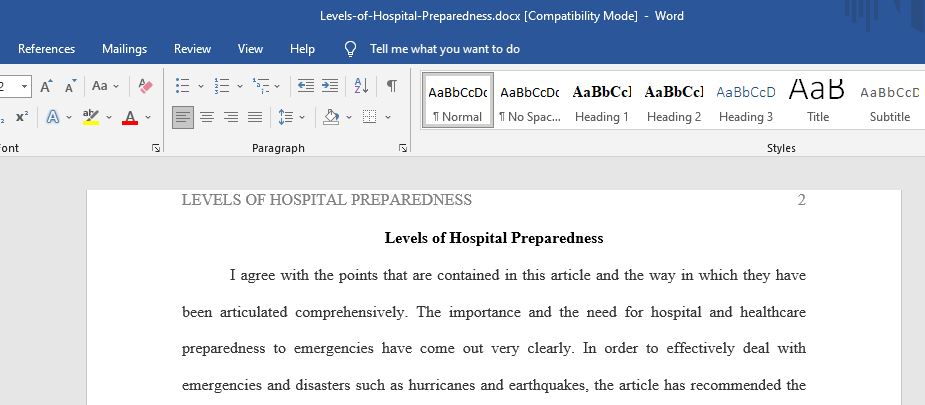Report on Levels of Hospital Preparedness
The Center for Biosecurity evaluation report finds that the level of preparedness among hospitals has advanced substantially since the launch of the Hospital Preparedness Program in 2002. However, during catastrophic events such as earthquakes and hurricanes, individual hospitals within communities have to collaborate with the community’s emergency response team, and hospitals from neighboring communities to effectively deliver care to victims and manage space, staff, and resources. The emergence of healthcare coalitions is a big step towards improving hospital preparedness.
Essential healthcare coalitions are critical to improving and promoting healthcare preparedness to emergencies. These coalitions help in the determination of how to distribute and track patients, share volunteers, allocate resources, operate alternate care facilities, and implement emergency standards of care (Toner et al., 2009). Also, they ensure that healthcare facilities respond optimally. When a hospital participates in such an alliance, it augments its preparedness for mass casualty events (Colorado Office of the Assistant Secretary for Preparedness and Response, 2016). However, most coalitions are not well funded or developed. Because of this, they struggle to find the resources needed to maintain them and to carry out their responsibilities (Toner, 2017). Reductions in federal funding for the coalitions also threaten to erode the progress that has been made.
Healthcare coalitions ensure that each member has what is needed to respond to emergencies and mass casualty events such as hurricanes and earthquakes by unifying the management capabilities of the healthcare system. Also, they ensure that each hospital within a health care coalition has adequate medical supplies and equipment, trained and qualified healthcare personnel, communication systems, and real-time information. Coalition members are at liberty to identify their partners and geographical boundaries. They improve the survival chances of disaster and mass casualty event victims. The interconnectedness that they provide offer support to health care facilities’ crises using local, state, and federal aid as particular needs unfold.
Healthcare coalitions help increase the preparedness of healthcare facilities for disasters and mass casualty events. They ensure that each facility is well-staffed, well-equipped, and well-resourced for such eventualities. However, underfunding and lack of resources may undermine the noble intentions of healthcare coalitions.
References
Colorado Office of the Assistant Secretary for Preparedness and Response. (2016). 2017–2022 Health care preparedness and response capabilities. Retrieved from https://www.colorado.gov/pacific/sites/default/fil…
Toner, E. (2017). Healthcare preparedness: saving lives. Health security, 15(1), 8-11.
Toner, E., Waldhorn, R., Franco, C., Courtney, B., Rambhia, K., Norwood, A., … & O’Toole, T. (2009). Hospitals rising to the challenge: the first five years of the US Hospital Preparedness Program and priorities going forward. Prepared by the Center for Biosecurity of UPMC for the US Department of Health and Human Services under Contract No. HHSO100200700038C. Washington DC, USA.
Answer preview:
Word: 200

